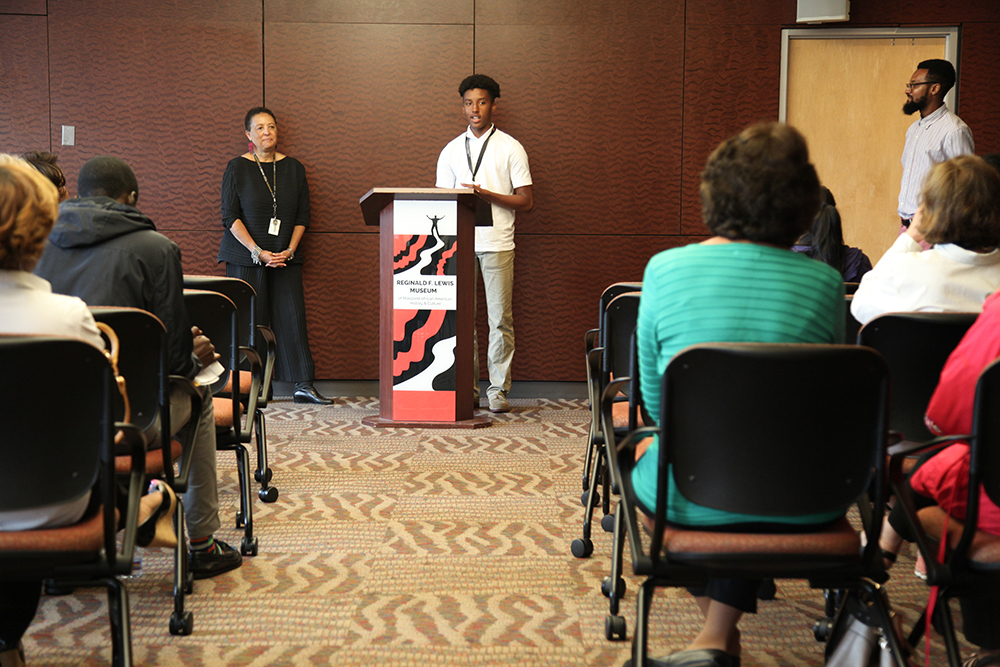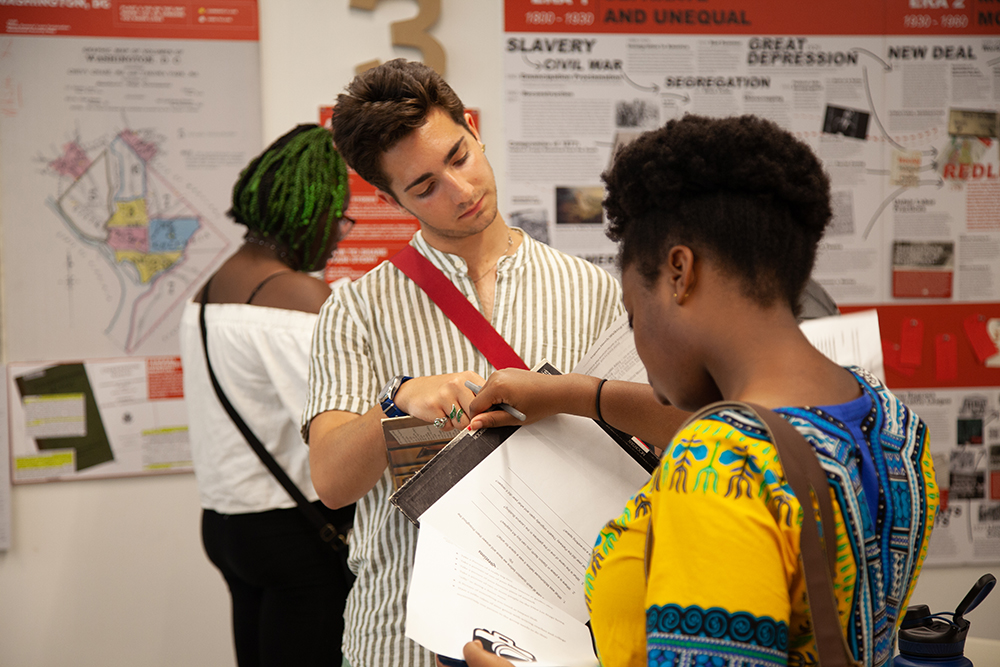Blog

Voices for a Relevant Future: 2019 Bloomberg Arts Internship
This week, 35 Bloomberg Arts Interns—all rising seniors in Baltimore high schools—will be winding down their travels in and out and through our city’s marvelous historic and contemporary art-filled spaces. We are lucky, here in Baltimore, to have such esteemed institutions that not only teach, but listen. They value our young people’s contributions and know that in order to ensure a vibrant future, they must consider voice in their collections, among their staff, and at the helm.
Baltimore is not alone in its work to become more inclusive and reflective of the community among leadership and staff. “In a city that prides itself on both the diversity of its population and its globally recognized cultural institutions, there is a lopsided reality: While about two-thirds of New Yorkers are people of color, two-thirds of the people who run its cultural institutions are white,” wrote Julia Jacobs for the New York Times.

“Our interns are high school students. They are growing up in a world where equity is important and know what it truly means for a space to be equitable for all,” said Philip Muriel, Bloomberg Arts Internship Lead Coordinator. “Our worksite partners are providing extensive opportunities for our interns to help make their institution more aware and inclusive.”
Twenty local arts facilities and museums are currently providing positions within their institutions to our interns that offer a wide range of dance, music, art, theatre, cultural, and curatorial opportunities. In 2017, our first cohort of interns visited the Baltimore Museum of Art and learned about the museum’s challenge of not just welcoming the community, but making sure the community feels welcomed in the space. There is a difference.

Less than a year later, acclaimed artist Amy Sherald joined their board. Christopher Bedford, the museum’s director, said in a statement, “As we develop a new strategic plan, it is important to have the voice of artists like Amy on the BMA’s Board of Trustees. Amy will bring a unique perspective to museum leadership, one that not only draws on her career as one of today’s most important artists, but also on her ties to the city of Baltimore itself.”
“Static, monolithic history must be supplanted with histories, plural—even as museums continue to safeguard the past in the objects they conserve and display. Directors and their staffs can enact bold forward-looking visions only when their boards support them in seeing museums as spaces to challenge, take creative risks and not simply conserve,” wrote Darren Walker in a New York Times op-ed earlier this summer.
Changing narratives to reflect our very diverse population—one that is youthful, justice-minded, and looking to connect with and build upon the treasures that fill our institutions—does not detract or devalue. On the contrary, relevance ensures community involvement and support. It ensures that a new generation will love and enjoy and support our city’s museums. Relevance shows an institution’s willingness to evolve. Relevance builds trust and confidence in communities’ willingness to grow and learn alongside institutions both now and in the future.
Step into 1 West Mount Vernon Place, the Walters Art Museum’s 19th-century mansion, and you are not just engulfed in the luxurious architectural details and pristinely preserved artifacts from distant cultures, you are drawn into stories. Works from ceramicist Roberto Lugo illuminate the life of Sibby Grant, as does the community art project, led by local ceramicist and educator Herb Massie and art program Jubilee Arts, which incorporates over 200 plates made by members of the Baltimore community.

Now wrapping up its third year in Baltimore, the Bloomberg Arts internship is ensuring that our students’ ideas and contributions are helping to shape and secure the future and relevance, as well as the inclusiveness, of arts organizations in Baltimore and beyond.
“Two of our interns, Connor and Isabelle, are working at the Walters Art Museum on a gallery guide aimed toward teenaged guests,” Philip said. “Another, Sonia, is interning at Wide Angle Youth Media where she is working as a journalist this summer investigating the dangers of heat-related illness in low-income communities.”
At all of our 2019 worksites, these students’ ideas are valued, their participation is appreciated, and their voices are heard. And while there is still plenty of hard work to do to achieve equity and representation within our arts and cultural institutions, we can at least know that these aren’t just places where community and student voices are welcomed, but places they are wanted.
The Bloomberg Arts Internship is managed by Young Audiences through the support of Bloomberg Philanthropies. It is a rigorous eight-week program providing 35 rising Baltimore high school seniors crucial college and career readiness preparation through hands-on, real-world workplace experiences and professional development. We are so proud of our interns and all they have accomplished this summer. Learn more about the program at yamd.org/bloomberg-arts-internship.








